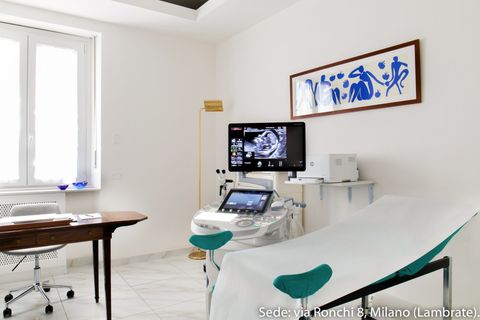GYNECOLOGICAL EXAMINATION: HOW IT IS DONE, WHAT IT IS FOR
THE IMPORTANCE OF PERIODIC CHECKS

WHAT IT'S FOR.
Gynecological Examination assesses the state of normalcy of the female genital system (the internal and external genitalia), excluding the presence of gynecological diseases in women, who are not pregnant.
It is useful to undergo periodic Gynecological Examination and Pap Test (preferably every 1 to 2 years) as early detection of some diseases (such as uterine cancers, myomas, endometriosis) improves the prognosis and possibility of treatment. Current American Congress of Obstetrics and Gynecology (ACOG) Guidelines recommend regular performance of the Examination for healthy women.
WHEN TO DO IT
It is preferable to make an appointment at a time when the woman is not menstruating, as the examination would become more difficult for the Gynecologist and embarrassing for the patient. No special preparation is needed for the Gynecological Examination. Shortly before, the patient can go to the bathroom to empty her bladder.
HOW IT IS PERFORMED.
A preliminary interview with the patient allows the gynecologist to accurately gather the patient's medical history and learn about any systemic diseases and ongoing therapies. Special attention deserves the timing and characteristics of menstruation, obstetric history, number of children, and sexual activity of the patient.
The reasons for the Gynecological Examination may be: choice of contraceptive method, clarification of various aspects of sexual life, pelvic pain, irregular, heavy or painful menstruation, prevention of vaginal infections, vaginal itching and burning, vaginal discharge that is profuse, foul smelling or different in color and consistency than usual, or a simple routine examination.
Viewing the patient's most recent examinations-Pap-Test, blood tests (such as CBC, hormone assays), and other specialized investigations (such as mammography, computerized bone mineralometry)-completes the diagnostic process.
Then the actual Gynecological Examination begins. The patient sits on the gynecological couch with her legs apart, resting her feet and legs on the two supports on either side of the couch. This is a somewhat awkward position! But it is the only way to perform the Examination.
The Gynecological Examination begins with a visual exploration of the vulva, paying special attention to the state of the external genitalia (whether they are inflamed, reddened, or dystrophic) and the possible presence of condylomata or other lesions. Then, an examination is performed with the speculum, a small retractor that gently separates the vaginal walls and highlights the uppermost part of the vagina and cervix. The gynecologist, thus, performs the Pap smear. Once the speculum is removed, vaginal exploration is performed. The Gynecologist introduces a finger into the vagina and simultaneously rests the other hand on the lower abdomen. This maneuver allows mobilization of the internal genitalia. He or she assesses the shape, volume, and mobility of the uterus and ovaries and the presence of any points that may elicit pain. The gynecologist also rules out the presence of gynecological pathologies (such as fibroids, ovarian cysts, and endometriosis). Identifies the position of the uterus, vagina, and bladder to rule out genital prolapse. Assesses the status of the patient's pelvic and perineal muscles. Hypertonic or sore muscles are often associated with pain during sexual intercourse (dyspareunia). Hypotonic muscles are a telltale sign of stress urinary incontinence, reduced vaginal sensitivity during intercourse.
For the woman who reports pain or burning during intercourse, the Gynecologist draws the "pain map." She assesses with careful gentleness all pain points of the external genitalia and vagina.
During the Gynecological Examination, in order not to feel pain or discomfort, the patient can take deep breaths and thus relax. The time will seem shorter to her. For virgin patients, who have not yet had full sexual intercourse, the speculum examination and vaginal exploration are not performed.
Book an examination
OUR OFFICEDS
CHOOSE WHICH OFFICE TO VISIT
MILAN:
- Studio Ginecologico Milano, in Via Ronchi 8, mezzanine floor, in front of train station exit and metro Lambrate, Side via Rombon. Access for people with disabilities
MELEGNANO:
- Medical office located at 63 Castellini Street, staircase f, 9th floor, 3 elevators present, access for people with disabilities







